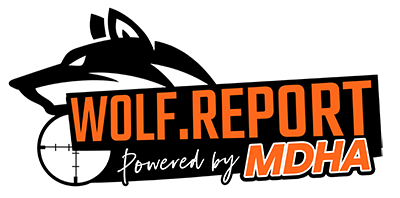

The howl of the wolf is a primal sound — evocative, wild, and a little bit haunting. It conjures up images of untamed wilderness, of a time when nature ruled in its full, unadulterated ferocity. But what happens when that ferocity conflicts with the very nature that spawned it? This is the question at the heart of the current debate over the management of wolf populations in Minnesota. It is a debate that is charged with emotion, but it's crucial that as a society, we approach it with a rational, balanced perspective.
It's impossible to discuss wolf management without first acknowledging their remarkable recovery in Minnesota. At the brink of extinction, the gray wolf population has rebounded. Today, they number around 2,800 — well above the 1,600 minimum set by the Minnesota Department of Natural Resources. This resurgence is, without a doubt, an environmental success story worth celebrating.
However, overpopulation leads to food scarcity, greater competition among the wolves, and increased opportunities for wolf interactions with humans and their livestock. The data shows a concerning trend — an increase in depredation on domestic animals and even a few high-profile attacks on pets. When a species reaches such unmanageable high numbers, we must intervene, just as we do with deer and other game species, to prevent these interactions and maintain balance.
The "Do Not Touch" approach that some advocate comes with a hefty price tag, and it's not just measured in dollars. The mounting human-wolf conflicts paint a clear but not the entire picture. When domestic animals are left unprotected, it's not just farmers who suffer. It's the microcosm of local economies and the general population's trust in conservation efforts that erode like the edges of land left for wolves to roam.
Inaction, too, holds the mutable thread of public perception. The longer we allow these incidents to occur unchecked, the more likely the public, whose support is vital, will waver in their dedication to conservation. Our shared goal should be efficient, effective conservation, not romantic naiveté. This isn't an issue of who-was-here-first; it's about coexistence in a landscape irrevocably shaped by humanity.
I do not advocate for the eradication or even a return to near-extinction of the wolf in Minnesota. No, my stance is one that strives for the middle path — a management plan that's rooted in the realities of a modern, human-dominated landscape.
We need to manage the wolf population through hunting and other methods. By doing so, we can maintain a sustainable population, mitigate depredation, and quell the unease that many in rural communities now feel. Simultaneously, critical habitats should be identified and protected, areas where wolves can flourish without the threat of human interference.
This approach demands close monitoring and a certain level of agility in the allowed annual take of wolves. It means prioritizing conserving not just the species, but their already diminished and habitually fragmented habitats. It's an approach that balances the importance of wolves in our ecosystem with practical considerations for the people who share their homes.
In times as fraught with division as ours, the conversation around wolf management is emblematic of our struggle to find the middle ground. It's a struggle between those who view nature as pristine and untouchable, and those who recognize that we, as stewards of this land, must sometimes make difficult choices for its well-being.
Every voice in this debate is valuable, but not every perspective is equally informed. Policy should be the fruit of rational, data-driven debate, not the knee-jerk reaction to emotional pleas. The path forward is messy and complex, much like any ecosystem. But it can be navigated with a combination of human ingenuity and conscientious conservation.
The wolf's place in the Northland is one of great significance. They are not just a product of the Minnesota wild; they are woven into its very fabric. But this doesn't mean we should forsake qualified management. Considering the tangible costs of inaction, it may be time to reevaluate our definitions of 'conservation' and 'preservation.' The wolves, in the end, could be the ones that benefit the most from a carefully considered management strategy that aims for equilibrium in a world that is heavily skewed by human influence.
